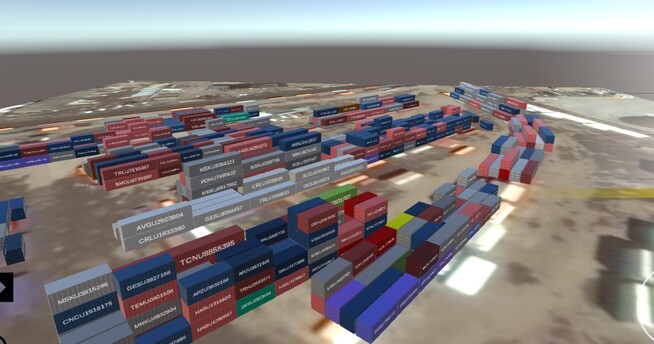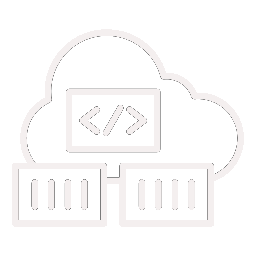A Comprehensive Guide to Container Terminal Operating Systems and Terminal Management Systems

Container terminals play a critical role in the global supply chain, serving as vital hubs for the movement and storage of goods. Efficient management of these terminals is essential to ensure seamless operations and maximize productivity.
A key component in the management of container terminals is the Terminal Operating System (TOS). The TOS is a software application that offers a comprehensive solution for managing various aspects of terminal operations, including vessel and yard planning, container tracking, resource allocation. It streamlines processes, optimizes resource utilization, enhances overall efficiency.
Another significant system used in container terminal management is the Terminal Management System (TMS). The TMS is a broader software platform that integrates multiple sub-systems and provides a holistic approach to terminal operations. It encompasses functions such as gate management, equipment control, billing, and reporting. The TMS enables efficient coordination and communication among different departments and stakeholders within a terminal.
By implementing advanced operating and management systems, container terminals can improve operational efficiency, reduce costs, enhance customer satisfaction. These systems allow real-time monitoring and control, facilitate data-driven decision-making, and provide valuable insights into terminal performance and productivity. With growing complexities of container terminal operations, adoption of robust operating and management systems has become indispensable for terminals to maintain their competitiveness in the global market.
Overview of Terminal Operating System
A Terminal Operating System (TOS) is a computerized management system used in container terminals to facilitate the efficient handling and tracking of containers. It acts as central control system for all terminal operations, providing real-time information and automating various processes.
Container Terminal Management System
A Container Terminal Management System (CTMS) is a comprehensive software solution designed specifically for container terminals. It integrates various modules and functionalities, including gate operations, yard management, vessel planning, and billing. The CTMS helps optimize use of resources, improve productivity, and streamline overall operations at the terminal.
Terminal Operating System
A Terminal Operating System (TOS) is a key component of a CTMS. It focuses on the management and control of terminal operations, such as container tracking, yard planning, and equipment utilization. The TOS provides a centralized platform for terminal operators to monitor and coordinate different activities, ensuring smooth and efficient workflow.
Port Terminal Operating System
A Port Terminal Operating System (PTOS) is a specialized TOS designed for port terminals. It is specifically tailored to handle the unique requirements and complexities of port operations, including vessel scheduling, cargo handling, and intermodal transportation. The PTOS plays a crucial role in optimizing the flow of goods and ensuring timely delivery at the port.
Understanding Port Terminal Operating System and Container Terminal Management System
A port terminal operating system, also known as a terminal management system, is a critical software solution that plays a crucial role in the efficient management of container terminals. It is designed to streamline and automate various terminal operations and processes, including container handling, inventory management, cargo tracking, and resource allocation.
A port terminal operating system acts as the backbone of a container terminal, providing real-time visibility and control over the entire terminal operations. It enables terminal operators to optimize their resources, minimize operational costs, and improve overall productivity. The system integrates with various hardware and software components, such as cranes, yard equipment, gate systems, and customs software, to ensure seamless coordination and communication between different terminal stakeholders.
Container terminal management system, on the other hand, refers to a broader concept that encompasses not only the port terminal operating system but also other management tools and processes. It includes functionalities like planning and scheduling, berth allocation, yard planning, labor management, and performance monitoring. The container terminal management system aims to optimize the overall terminal performance and ensure smooth operations from vessel arrival to cargo delivery.
In summary, a port terminal operating system is a key component of a container terminal management system, providing operational control and automation capabilities. It enables terminal operators to efficiently manage container terminal operations, while the container terminal management system encompasses a wider range of tools and processes to optimize overall performance.
Benefits and Challenges of Implementing Container Terminal Management Systems
Container Terminal Management Systems (CTMS) provide numerous advantages for port operators, terminal managers. These systems offer an integrated solution to manage, optimize terminal operations, improving efficiency, profitability. By automating processes, streamlining workflows, CTMS enables real-time visibility into container movements, inventory levels, resource utilization, based on the latest technologies.
One of the primary benefits of implementing a CTMS is increased productivity. The system allows for better planning, coordination of activities, reducing idle time, minimizing delays. It facilitates efficient resource allocation, ensuring effective utilization of equipment, personnel, truck fleets, other resources. This results in faster turnaround times, increased throughput, higher customer satisfaction, which is crucial for business operations in various industries.
Another advantage of CTMS is enhanced data management, reporting capabilities. The system collects, analyzes data from various sources, including sensors, RFID tags, manual inputs, to provide valuable insights into terminal operations. This data can help identify bottlenecks, pinpoint areas for improvement, make informed decisions about terminal efficiency. Access to accurate, up-to-date information empowers terminal managers to optimize processes, allocate resources more efficiently, proactively address issues, which is critical for logistics management, truck scheduling.
However, implementing a CTMS does come with its challenges. One of the main challenges is integrating the system with existing infrastructure, legacy systems. Port terminals often have multiple systems in place, each serving specific types of functions. Integrating a CTMS requires careful planning, coordination to ensure a smooth transition, minimal disruption to operations. Training staff on new system, overcoming resistance to change may also be necessary, especially in large companies involved in logistics, shipping.
Another challenge is the cost associated with implementing a CTMS. The investment required for hardware, software, infrastructure upgrades can be significant, particularly for large terminals with extensive operations. Ongoing maintenance, support costs should also be considered. Terminal operators must evaluate potential return on investment, weigh benefits against the costs before deciding to implement a CTMS, especially if their work involves providing services across different industries.
In conclusion, implementing a Container Terminal Management System offers advantages such as improved productivity, enhanced data management, better decision-making capabilities. However, challenges related to integration complexity, costs should be carefully considered. Terminal operators should assess their specific needs, capabilities to determine if a CTMS is the right solution for their business in terms of efficiency, cost-effectiveness.
